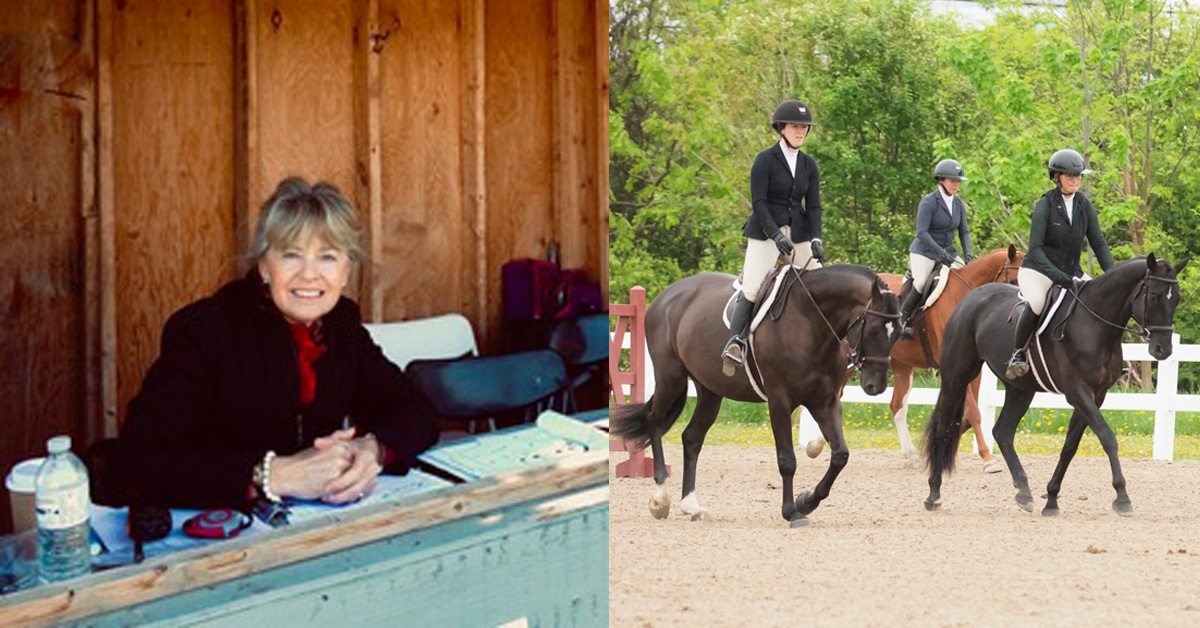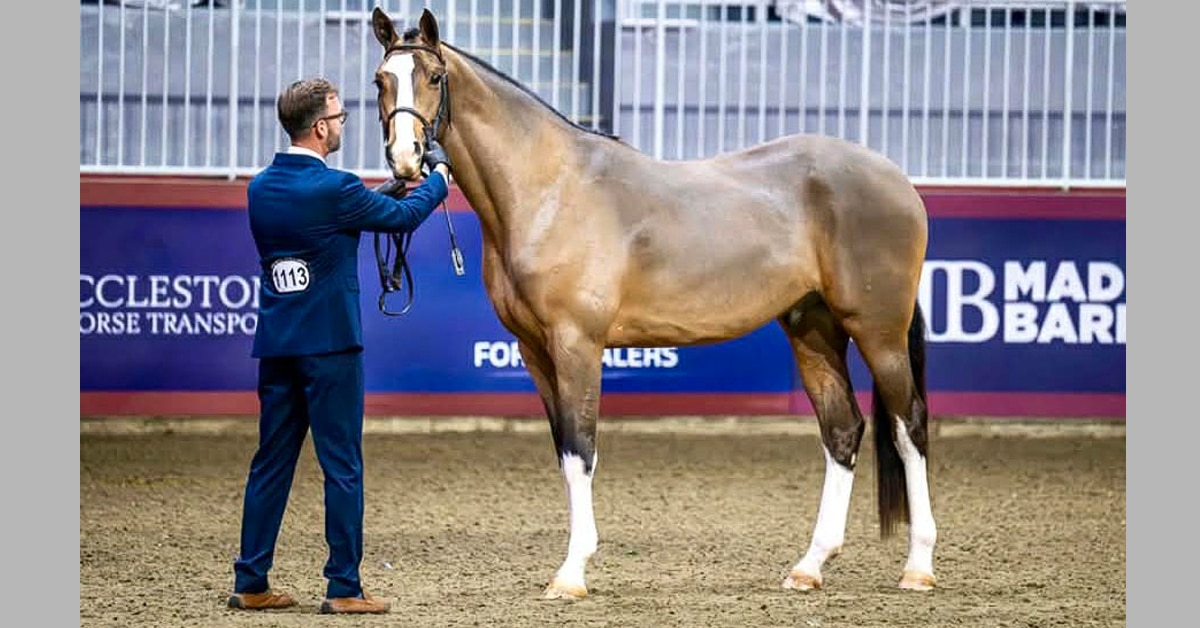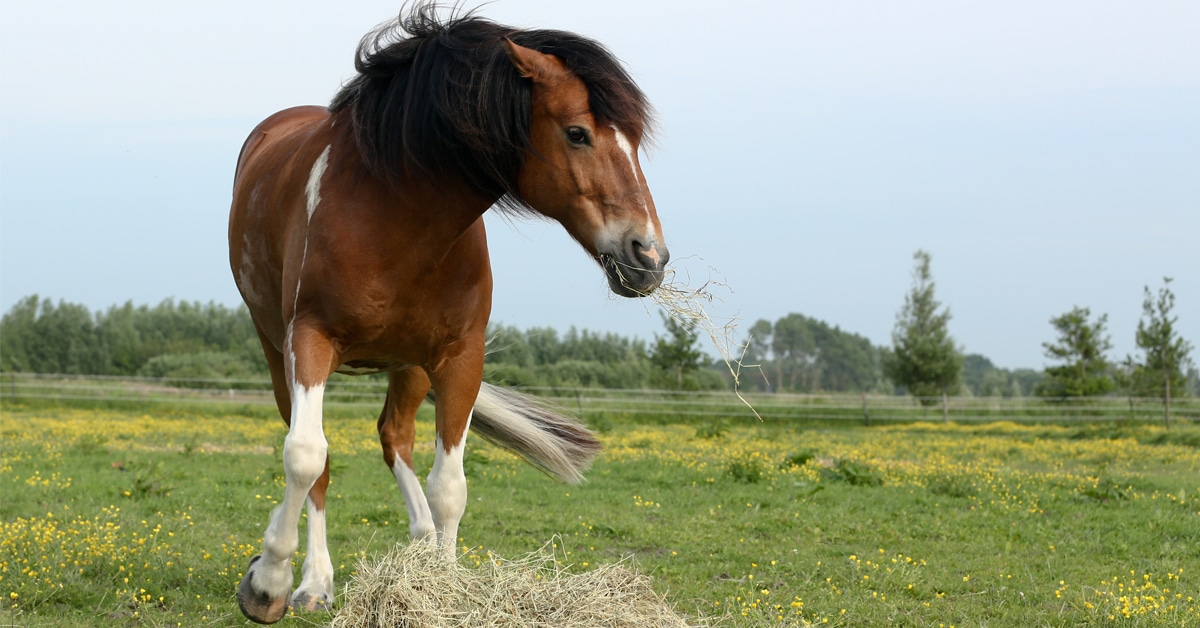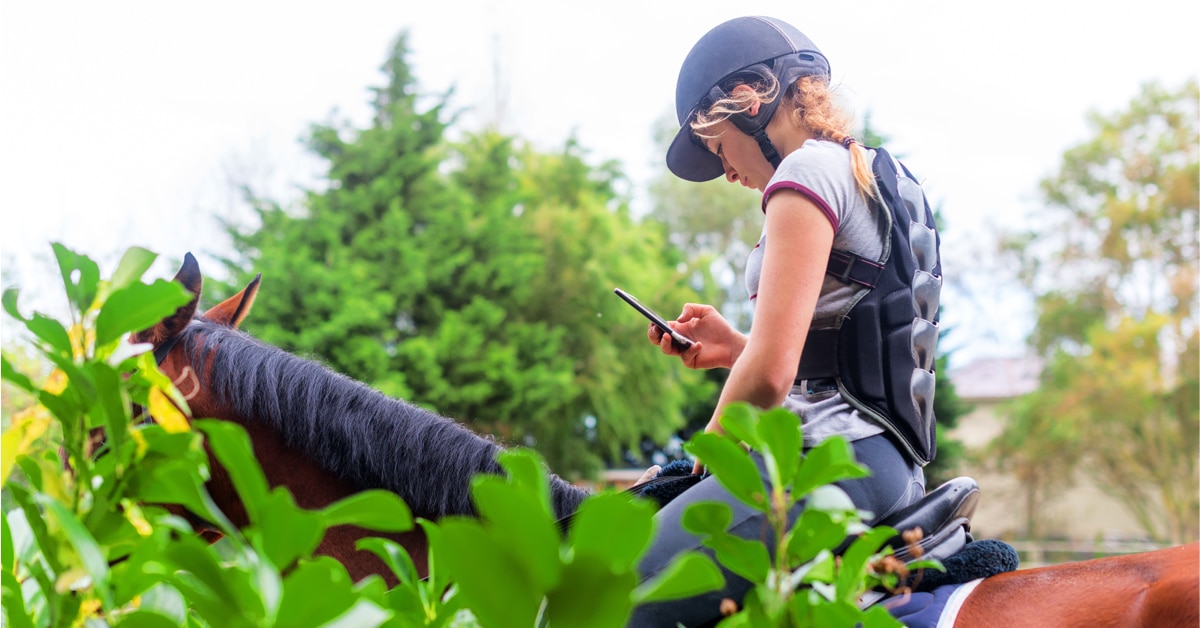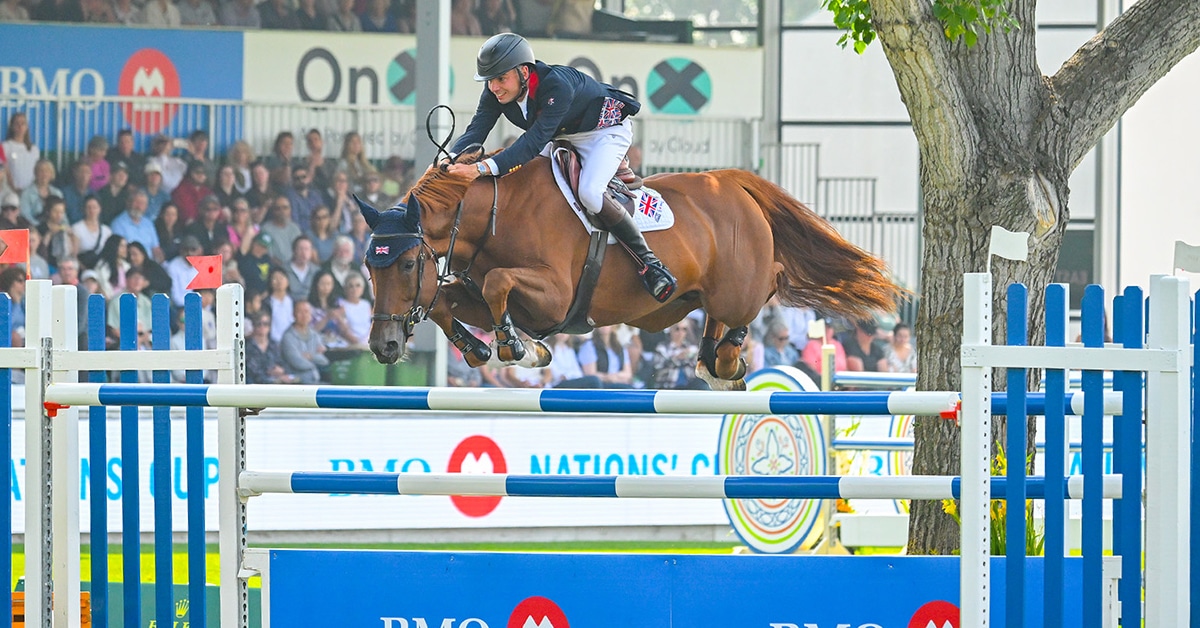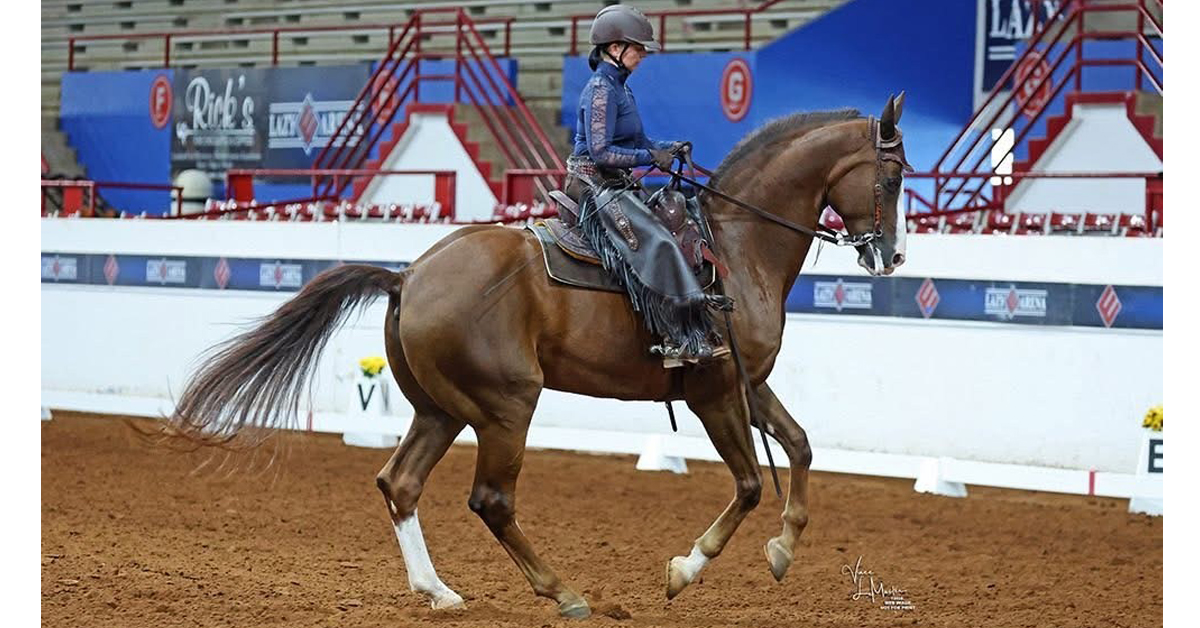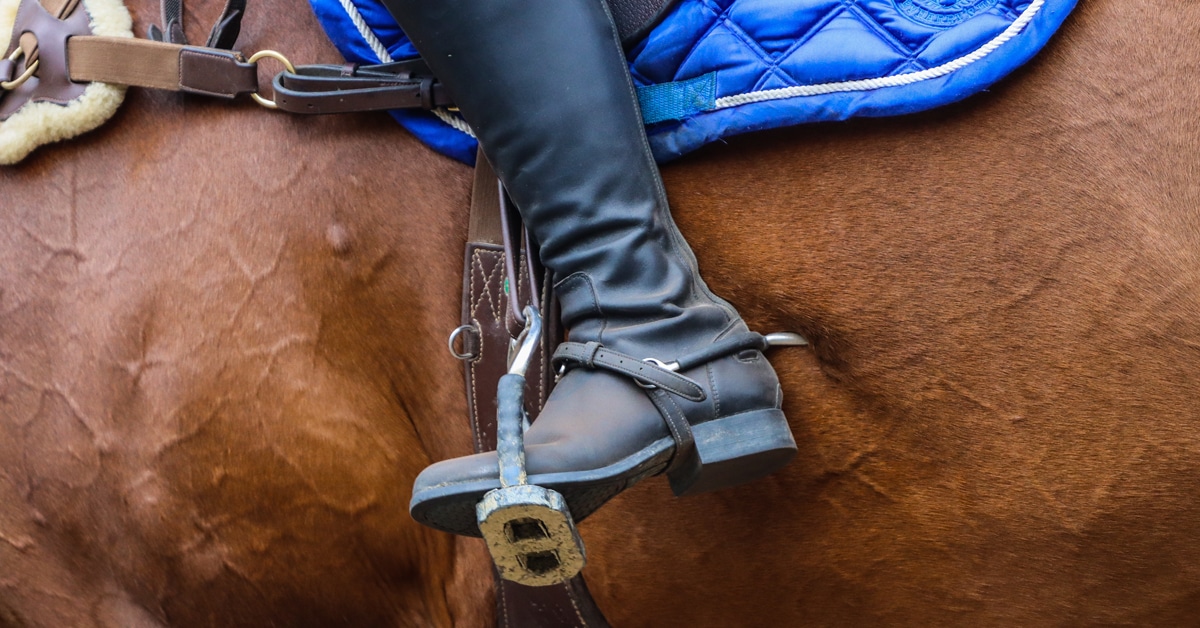Imagine taking an unhandled three-year-old colt and transforming it into a horse that can walk, trot, canter and navigate obstacles in the space of three days.
That’s exactly what Canadian CCI4* eventer Tik Maynard did in Kentucky in March at Road to the Horse, the world championship for colt-starting that celebrates western culture and the Quarter Horse. Maynard, who operates elite eventing barn Copperline Equestrian near Ocala, Florida, with his wife and fellow eventer/coach Sinead (Halpin) Maynard, was the RTTH 2024 champion, working with Quarter Horse gelding Capera Catt.
You are likely not going to find yourself working under the pressure of such a tight timeline with a young homebred or your next project horse, but some of the skills Tik used to win Road to the Horse can apply in any training situation. It’s about instilling confidence, and gaining the horse’s trust and respect. Here are some of his tips for achieving those goals:
Observe
Tik suggests you start by simply observing the horse. Determine the following: Is it anxious or scared, is it is curious, is it pushing into your space or running away, does it want to be with people or not be with people?
Note how it reacts to new surroundings. Is it flighty when a branch blows or a dog barks? When it’s nervous, how does it affect it? Does it freeze, flinch, run off or push into you?
The hardest-to-read horses are those that are scared, but don’t react much, Tik says. “Everyone recognizes a horse that’s scared when it’s running around with its head up.” Take a bigger picture view, noting factors such as the footing, nearby distractions, whether there are other horses around.
When he was determining what horse to use in the Road to the Horse, Tik observed that Capera Catt was curious, but not pushy. “There was him and another horse, and both went up to investigate a banner on the side of the pen. He touched it gently with his nose and left. The other horse touched it, then pushed it harder. A horse can be curious and scared, but you want the right amount of curiosity.” Maynard noted that Capera Catt had a soft, gentle eye and good conformation. He also noticed the gelding wasn’t quick to kick at other horses – another plus.
Tik says the observation step applies, “every day, every season.”
Teach the first “word”
The next step depends on the first step and whether the horse is scared or not. That can require different approaches for different horses, but generally Tik chooses an exercise that’s easy for the horse to understand.
“Because the horse is a flight animal, it’s pretty easy to get them to trot, canter, jump, do dressage or a cross-country course if the horse has nervous energy, as you are just steering it,” he explains. That doesn’t mean you’ve established true communication. “You want a glow in his eye that indicates he understands you are asking a question. You see it in dogs, and in kids you are teaching, if they are looking you in the eye when you talk.

“Curiosity is a wonderful thing.” (roadtothehorse.com photo)
“Start with one first ‘word,’ such as Kevin Costner’s John Dunbar character did when learning the indigenous language in Dances With Wolves, says Tik. “You want to find a common language and be interactive so the horse understands the question and isn’t just reacting to pressure.”
At Road to the Horse, Tik started with a very basic exercise. When Catt would look at him as he approached in the round pen, Tik would stop and back up. When the horse came up and touched his hand, he’d do the same.
“It’s a very good exercise to build rapport and communication,” Tik says. “A lot of people aren’t present, are too quick to go into a horse’s space. Let them touch you before you touch them.” A fearful horse may initially view a pat as a threat, not a reward. You retreating when they approach or touch you is their reward.”
There are pros and cons to the size of the space you’re working, he says. A horse may feel trapped in a small round pen or stall, but then can leave in a bigger space and be hard to catch. At Road to the Horse, he started his gelding in a 50-foot round pen on day 1 and 2, then by day 3, used a 40-foot pen.
Find the Rhythm
Once the horse knows the first words of the ‘vocabulary’ – touching your hand, following you, lightening its leg when touched so you can pick up a foot – it’s like a song, says Maynard.
He cites an interview he heard with famed cellist Yo-Yo Ma, who explained all music was about either repeating a pattern or changing a pattern.
“Just like a song, everything has a rhythm or pattern,” Tik explains. “Even when you’re changing the pattern, it comes back to the rhythm of how you approach a horse, how you groom, how you do up the bridle, get on and off.”
He says initially the pattern may be A (touching on the chest), then AAA, then new thing B, then AB, then ABAB, then new thing C, and so on. The rhythm gives a horse confidence and develops the rhythm.
“Imagine you are in downtown Tokyo and don’t know the language or culture, don’t understand the writing on signs, or what side of the road you’re supposed to be on,” says Tik. “As you gain understanding of the language and culture, you gain confidence and understanding.
“A horse also thinks in a progressive way.”
Keep adding new ‘words’ to the vocabulary, he says, such as getting a horse used to the saddle pad, the saddle, the rider’s weight, then walking, trotting, turning, stopping under saddle.
Take the Duolingo approach
Duolingo, the popular app for learning a new language, works by having you read a word, say a word, write the word, use it in a sentence, then use it repeatedly until it’s part of your vocabulary.
“It constantly rewards you, never tells you are doing a bad job or criticizes mistakes,” Tik says. “It’s similar with a horse. You try to have them learn small things, and constantly have them feel positive about their efforts.”
He advises you to eliminate the word ‘should’ from your own vocabulary, such as your horse should be better on the trail, should load without issue, should be getting its lead changes, should be jumping bigger fences, etc.
“If a horse does it, great, but when I get a new horse, I always approach them as if they know nothing and start from the beginning. I always like to work with a horse that’s a blank canvas. I find it easier 98 per cent of the time.”
***
Note: Tik purchased Capera Catt – aka TomCat – from Pitchfork Ranch after Road to the Horse. He plans to concentrate on groundwork and liberty training this year and hopes to take him to Road to the Horse 2025 as a championship competitor to demonstrate what he’s learned since. Meet TomCat and Tik here:
The Latest
